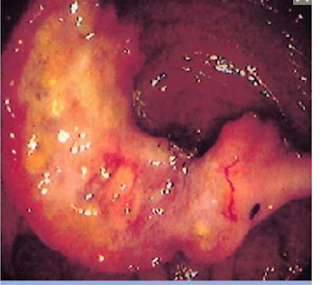Pyloric stenosis
Pyloric stenosis is an uncommon condition in infants that blocks food from entering the small intestine.
Normally, a muscular valve (pylorus) between the stomach and small intestine holds food in the stomach until it is ready for the next stage in the digestive process. In pyloric stenosis, the pylorus muscles thicken and become abnormally large, blocking food from reaching the small intestine.
Pyloric stenosis can lead to forceful vomiting, dehydration and weight loss. Babies with pyloric stenosis may seem to be hungry all the time.
Surgery cures pyloric stenosis
Symptoms
Signs include:
Vomiting after feeding. The baby may vomit forcefully, ejecting breast milk or formula up to several feet away (projectile vomiting). Vomiting might be mild at first and gradually become more severe as the pylorus opening narrows. The vomit may sometimes contain blood.
Persistent hunger. Babies who have pyloric stenosis often want to eat soon after vomiting.
Stomach contractions. You may notice wavelike contractions (peristalsis) that ripple across your baby's upper abdomen soon after feeding but before vomiting. This is caused by stomach muscles trying to force food through the narrowed pylorus.
Dehydration. Your baby might cry without tears or become lethargic. You might find yourself changing fewer wet diapers or diapers that aren't as wet as you expect.
Changes in bowel movements. Since pyloric stenosis prevents food from reaching the intestines, babies with this condition might be constipated.
Weight problems. Pyloric stenosis can keep a baby from gaining weight, and sometimes can cause weight loss.
When to see a doctor
See your baby's doctor if your baby:
Projectile vomits after feeding
Seems less active or unusually irritable
Urinates much less frequently or has noticeably fewer bowel movements
Isn't gaining weight or is losing weight
Request an Appointment at Mayo Clinic
Causes
The causes of pyloric stenosis are unknown, but genetic and environmental factors might play a role. Pyloric stenosis usually isn't present at birth and probably develops afterward.
Risk factors
Risk factors for pyloric stenosis include:
Sex. Pyloric stenosis is seen more often in boys — especially firstborn children — than in girls.
Race. Pyloric stenosis is more common in whites of northern European ancestry, less common in Black people and rare in Asians.
Premature birth. Pyloric stenosis is more common in babies born prematurely than in full-term babies.
Family history. Studies found higher rates of this disorder among certain families. Pyloric stenosis develops in about 20% of male descendants and 10% of female descendants of mothers who had the condition.
Smoking during pregnancy. This behavior can nearly double the risk of pyloric stenosis.
Early antibiotic use. Babies given certain antibiotics in the first weeks of life — erythromycin to treat whooping cough, for example — have an increased risk of pyloric stenosis. In addition, babies born to mothers who took certain antibiotics in late pregnancy may have an increased risk of pyloric stenosis.
Bottle-feeding. Some studies suggest that bottle-feeding rather than breast-feeding can increase the risk of pyloric stenosis. Most of the people who participated in these studies used formula rather than breast milk, so it isn't clear whether the increased risk is related to formula or the mechanism of bottle-feeding.





Comments